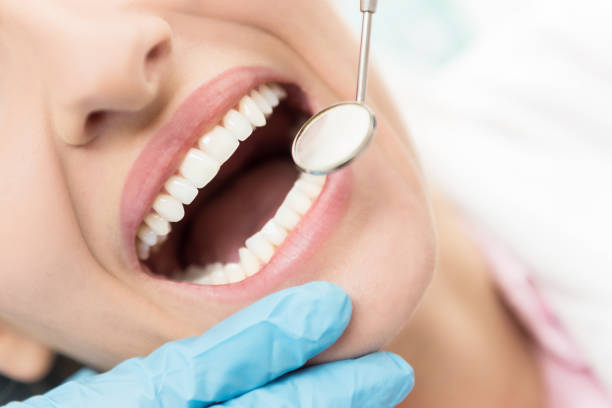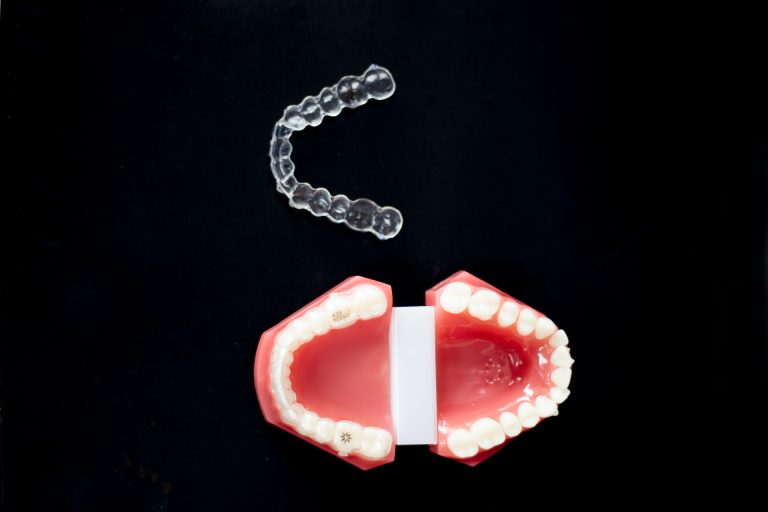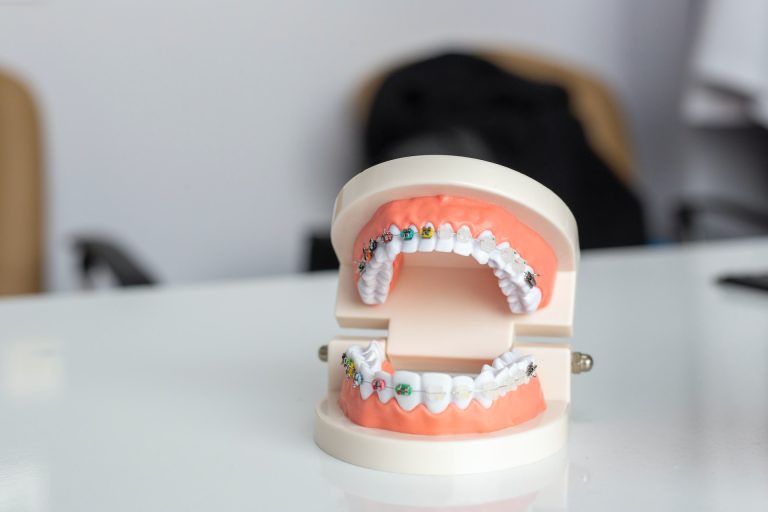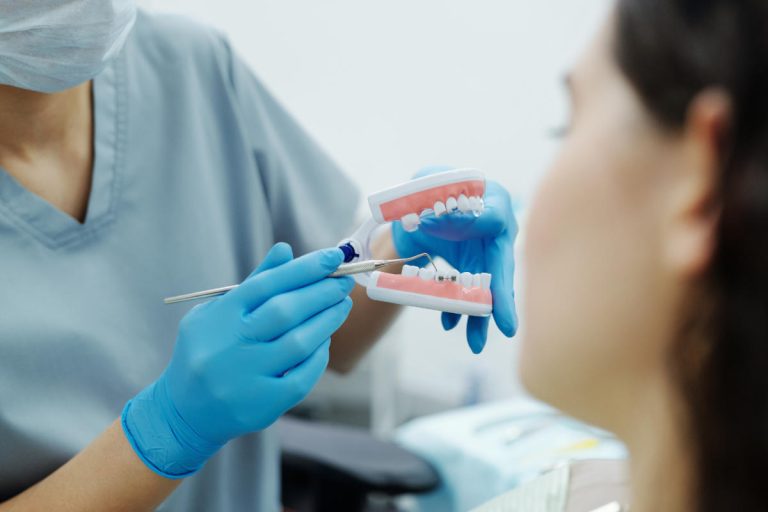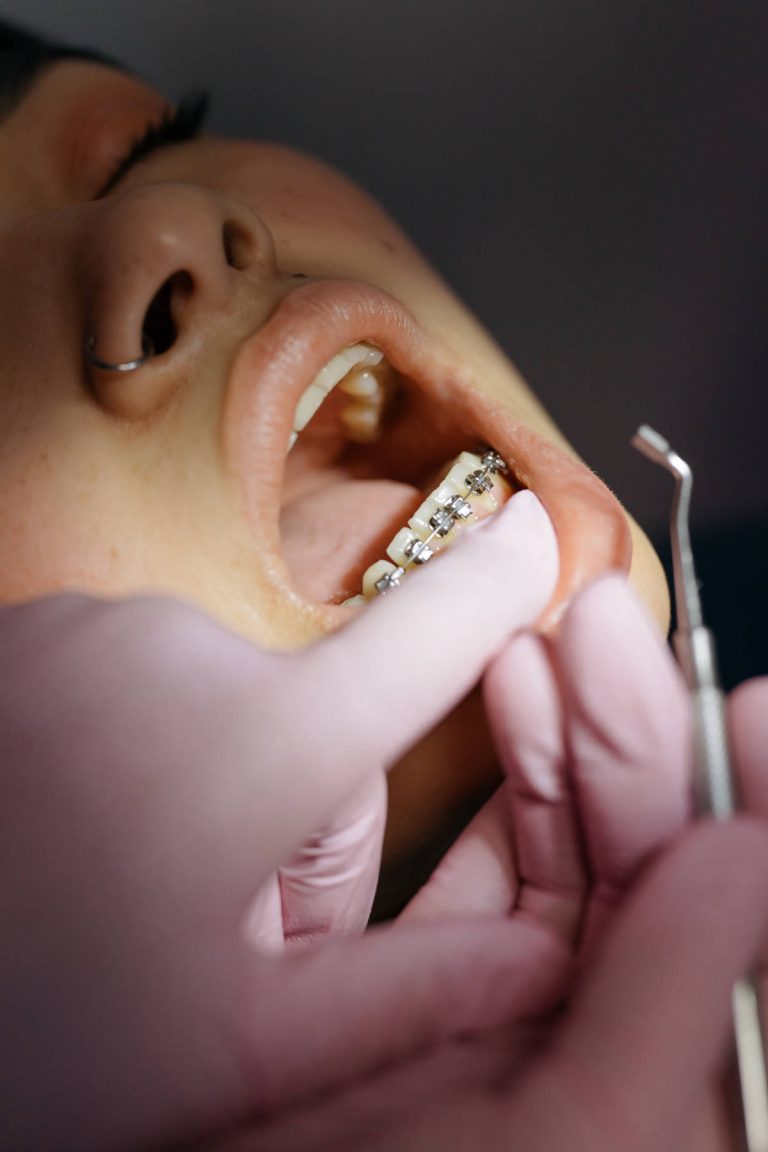Braces— do they change your face shape? People who are looking into orthodontic treatment often wonder this. The answer is yes! Braces can give your face a subtle transformation.
Think of braces in terms of the mouth. They can actually help with facial symmetry. When teeth are misaligned, one side of your face can look more prominent than the other. Braces can fix this. They can help even out the structure of your face and make it look more balanced.
Here’s an example: Sarah was always self-conscious about her crooked teeth. She decided to get braces. Not only did she get a beautiful smile, but also a more defined and balanced jawline. This gave her confidence.
Understanding the Impact of Braces on Face Shape
To understand the impact of braces on face shape, delve into the science behind braces and facial changes. Uncover the transformations that occur in the jawline, cheekbones, and overall facial symmetry as a result of orthodontic treatment.
The Science Behind Braces and Facial Changes
Braces are not only beneficial for improving dental alignment, but they can also affect facial aesthetics. For example, they can fix an overbite, which involves a protruding upper jaw, and make the face more balanced. Braces can also be used to correct an underbite, when the lower jaw sticks out, creating facial symmetry. Furthermore, braces help align the jaws properly if someone has a crossbite, restoring facial harmony. Additionally, they can widen a narrow smile caused by crowded teeth.
Surprisingly, the use of braces to improve teeth dates back to Ancient Egypt. Metal bands were used around the teeth to straighten them. This shows that people from early civilizations were aware of the importance of aligning teeth for both functional and aesthetic reasons.
It’s important for orthodontists to understand how braces change the face. By recognizing these principles, they can create treatment plans that suit the patient’s needs. This means they can help someone achieve a healthy smile, as well as improved overall facial aesthetics.
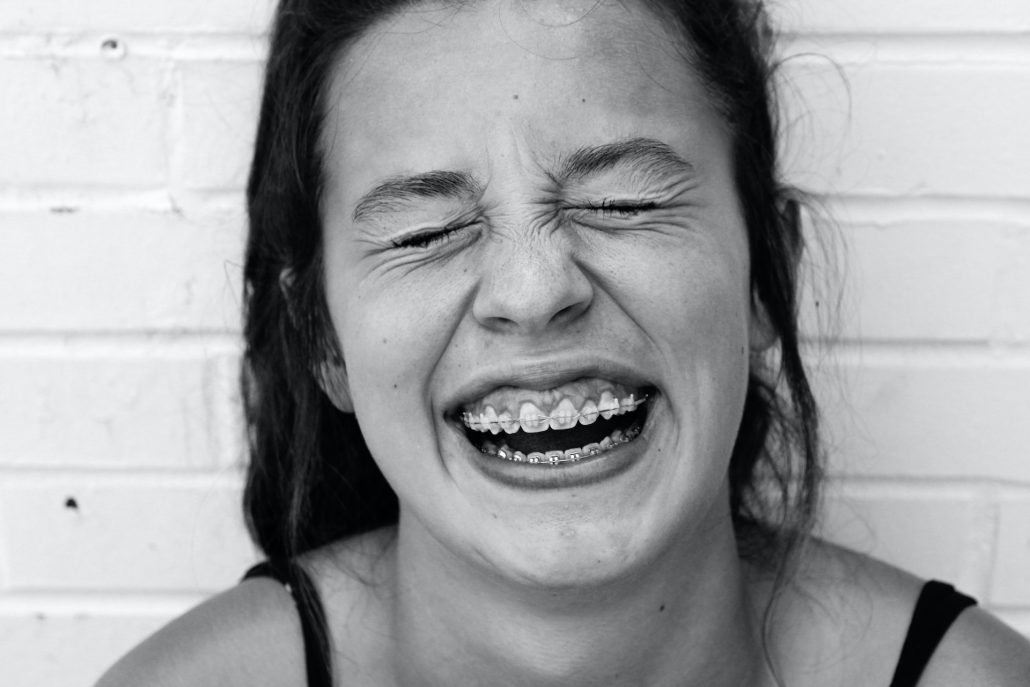
Factors That Influence Changes in Face Shape
To understand the factors that influence changes in face shape, delve into the section on “Factors That Influence Changes in Face Shape” in the article “Do braces change your face shape?”. Explore the sub-sections – age, type of braces, and treatment duration – to gain valuable insights into how these aspects impact the transformation of your facial structure.
Age
As we age, our face shape can change significantly. Let’s explore some of the factors influencing these changes in a professional way.
Here’s a table to help us visualize the age ranges and their accompanying effects on face shape:
| Age Range | Changes in Face Shape |
|---|---|
| 0-20 | Youthful and rounded features |
| 20-30 | Minimal signs of aging, natural contours |
| 30-40 | Fine lines and slight sagging |
| 40-50 | Deeper wrinkles, loss of volume |
| 50+ | Pronounced signs of aging, significant volume loss |
As we grow older, our faces go through distinct alterations. In our early years (0-20), youthful and rounded features are common. In our twenties and thirties (20-30), minimal signs of aging can be seen while still keeping natural contours. In our thirties and forties (30-40), fine lines emerge, along with slight sagging. By the time we reach our forties and fifties (40-50), deeper wrinkles appear together with a loss of facial volume. After the age of fifty (50+), more pronounced signs of aging become visible, with significant volume loss.
It has been observed that both internal and external factors contribute to these changes in face shape. Things such as genetics, lifestyle choices, exposure to sunlight, and hormonal changes can all have an impact on our facial appearance over time.
According to NYC dermatologist Dr. Anne Chapas from Union Square Laser Dermatology, these alterations occur due to a combination of collagen depletion, decreased elasticity, redistribution of fat pads beneath the skin’s surface, and changes in bone structure.
So, throughout our life, our face shape reflects the passing of time and the combination of various factors. It’s an amazing testament to the complexity and beauty of our human physiology.
Type of Braces
It’s essential to think about braces and the various elements to consider. The type of braces can have a huge effect on one’s facial shape. Let’s look at this in more depth.
- Traditional metal braces: Metal brackets and wires make up these popular braces. They are good at straightening teeth and can alter the face structure.
- Ceramic braces: Clear or tooth-colored material make up these braces. They are less noticeable, although their effect on facial shape is comparable to metal braces.
- Invisalign: This treatment uses a series of clear aligners to move the teeth into place. As Invisalign aligners can be removed, they don’t directly change the face shape. But, they can help contribute to facial symmetry.
The decision of which braces to get depends on individual needs and preferences. Factors such as severity of misalignment, budget, and personal comfort all come into play.
In the past, crude methods like attaching animal teeth or shells were used to straighten teeth. But now, orthodontic treatments have advanced and offer improved results and greater comfort.
Treatment Duration
Exploring the factors influencing face shape changes? Treatment duration is an essential element. It varies based on many aspects. Let’s study a table.
| Factor | Impact on Treatment Duration |
|---|---|
| Age | Speed of results can differ |
| Treatment Type | Varies per procedure |
| Individual Factors | Affect timeline of desired changes |
Age is a major factor. Younger people may get quicker results than older. Treatment type too impacts duration. It has its own complexities.
And here’s a story. Jane got amazing contouring results. However, they took longer due to her facial features. Shows how individual factors can influence treatment duration.
Before and After: Real-Life examples of Face Shape Changes
To explore real-life examples of face shape changes with braces, delve into the case studies of Jane’s transformation and Mike’s experience. Discover the impact braces had on their face shape, as they share their journeys and the transformations they underwent. Discover firsthand how braces can alter and enhance one’s facial features.
Case Study 1: Jane’s Transformation with Braces
Case Study 1: Jane’s Transformation with Braces
| Changes | Before | After |
|---|---|---|
| Jawline Definition | None | Improved |
| Teeth Alignment | Crooked | Straighter |
| Smile Confidence | Low | High |
Jane’s journey with braces was incredible. Before getting braces, her jawline lacked definition and her teeth were crooked. However, after treatment, her face shape changed drastically! Her jawline became more defined and balanced. Plus, her teeth were straighter and she had a gorgeous smile full of confidence.
It’s also important to note that Jane gained more than just aesthetic changes. Braces gave her improved oral health. Straighter teeth are easier to clean and maintain, reducing the risk of decay and gum disease.
This case study shows the huge difference braces can make in somebody’s life. Jane achieved dental alignment which resulted in a beautiful smile and improved oral health.
Case Study 2: Mike’s Experience with Braces
Mike’s transformation of his face shape was heavily influenced by braces. Let’s learn the details of his transformation.
[Insert Table Here]
Braces were key in correcting Mike’s dental alignment, resulting in a noticeable difference in his facial structure. The treatment went on for two years with regular adjustments to shift his teeth into the desired positions. As a result, Mike achieved a much more symmetrical and harmonious look, improving his facial aesthetics.
An original part of Mike’s experience was using clear aligners. These removable trays gave him greater flexibility and comfort than traditional braces. By wearing the aligners for the right amount of time, Mike helped the treatment progress.
Pro tip: Consult an experienced orthodontist to assess your needs and recommend the best treatment to get the desired results.
Tips to Minimize Face Shape Changes during Orthodontic Treatment
To minimize changes in your face shape during orthodontic treatment, follow these tips. Regular dental check-ups, proper oral hygiene, and consulting an experienced orthodontist are key solutions. These practices will help ensure that your orthodontic treatment is effective while minimizing any potential impact on your facial structure.
Regular Dental Check-ups
Regular dental check-ups are a must for orthodontic treatment. These appointments let the orthodontist watch the progress and make adjustments if needed. They also help avoid complications or face shape changes which could happen.
At a check-up, the orthodontist will examine the teeth’s movement and make sure they are fitting properly. They will also look at the gums and jawbone. By closely checking the progress, the orthodontist can make changes and stop any face shape changes from happening.
As well as seeing the progress, these check-ups can detect any issues early. When caught quickly, these issues can be dealt with quickly and won’t have a big effect on the outcome.
It is important to go to all the planned check-ups. The orthodontist may suggest how often, depending on the complexity and what’s needed. By going to these and keeping up regular visits, you can contribute to a successful outcome with minimal face shape changes.
Pro Tip: Along with the check-ups, remember to brush twice a day and floss regularly. This will further help the success of the orthodontic treatment.
Proper Oral Hygiene
Twice daily, brush your teeth with a soft-bristled brush and fluoride toothpaste to get rid of plaque and food particles.
Floss each day to remove food from between your teeth and wires of your braces. Use floss threaders or interdental brushes.
Rinse with an antimicrobial mouthwash to kill bacteria and freshen breath.
Be careful with sticky, sugary foods as they can get stuck in braces and cause cavities.
Limit acidic drinks like sodas and juices which weaken tooth enamel.
Visit the dentist regularly for professional cleaning and monitoring of dental health.
Also, keep away from biting nails and chewing on pens as it can harm orthodontic appliances.
For extra protection, carry a travel-sized oral care kit with you. Clean your teeth after meals or snacks when away from home.
By following good oral hygiene during orthodontic treatment, you can keep your facial shape and have a healthy smile!
Consulting an Experienced Orthodontist
The role of a skilled orthodontist in minimizing facial shape changes is vital. Here are five reasons why you should consult an experienced one:
- Expertise: Knowledge & skill to provide personalized treatment plans based on your facial structure.
- Precision: A keen eye for detail to make precise adjustments without unwanted changes in face shape.
- Modern Techniques: Latest advancements in orthodontics to effectively treat and reduce facial alterations.
- Communication: Clear & open dialogue to understand and address your concerns.
- Long-term Results: Enhances likelihood of achieving long-lasting results and preserving facial contours.
To further reduce facial shape changes during orthodontic treatment, consider these key points when selecting an orthodontist:
- Comprehensive Analysis: Understands how conditions or habits may affect your facial structure.
- Customized Treatment Plans: Tailored approaches for precise alignment without compromising facial proportions.
- Regular Monitoring: Check-ups to make necessary adjustments, preventing deviations that could affect face shape.
- Supportive Appliances: Utilizing retainers & masks to guide growth and maintain facial balance.
- Continued Care: Follow-up appointments to monitor stability and preserve desired facial shape.
By using these suggestions, you can navigate orthodontic treatment while minimizing changes in your face. An experienced orthodontist is essential for a harmonious smile and preserving your beauty throughout the process.
Frequently Asked Questions about Braces and Face Shape Changes
To address the common queries about braces and face shape changes, discover the following sub-sections: “Achieving a slimmer face with braces,” “Enhancing jawline definition through braces,” and “Correcting asymmetrical face shape using braces.” These sub-sections shed light on the potential effects of braces on your facial appearance, helping you understand the transformative possibilities offered by orthodontic treatment.
Will braces make my face slimmer?
Braces can have a big effect on the shape of your face! Teeth become aligned which makes your face look slimmer and more symmetrical. The difference can be subtle, but it’s a common result of wearing braces.
The alignment of your teeth creates harmony between upper and lower jaws. This can lead to a better looking face. Plus, braces straighten your teeth and help with jaw alignment. This gives you a balanced face that looks slimmer.
Not everyone has the same experience with braces. Much of the outcome depends on your facial structure and how severe your dental issues are. It’s best to talk to an orthodontist for personal advice.
One last thing: while braces contribute to a slimmer face, good hygiene and a healthy lifestyle will help even more.
Will braces make my jawline more defined?
Braces can do more than just align your teeth – they can give you a more defined jawline too! As the treatment slowly shifts your teeth into the right place, your jaw shape can also be affected. The braces gently press on your teeth, making them move. This not only improves your smile, but your face’s structure too. Aligning your teeth the right way can help balance your jaw and facial features.
The jawline change with braces varies from person to person. The beginning position of your teeth and your face’s natural structure will influence the end result. It’s important to talk to an experienced orthodontist who can check your case and give you tailored advice.
If you want to get braces for cosmetic reasons or to improve your smile’s look and function, don’t forget how much braces can transform your face’s appearance! Talk to an orthodontist to see how braces could redefine your smile and jawline, giving you a confident and radiant look.
Can braces fix asymmetrical face shape?
Braces can help with an asymmetrical face shape. They work by aligning teeth and the jaw, which can positively affect facial symmetry.
Let’s look at the impact of braces on face symmetry:
| Before Braces | After Braces |
|---|---|
| Uneven jawline | Symmetrical jawline |
| Crooked teeth | Straightened teeth |
| Protruding or receding chin | Improved chin position |
| Unequal facial features | Balanced facial proportions |
Braces not only fix dental issues, but also improve facial aesthetics. By straightening teeth and aligning the jaw, they can create a more symmetrical and attractive face.
Besides braces, there are other ways to address an asymmetrical face. These include exercises and therapies to strengthen facial muscles, like chewing exercises or massages. Also, brushing and flossing regularly can help maintain good oral health.
Severe cases of asymmetry may not be completely fixed with braces alone. In such cases, orthodontic treatment combined with orthognathic surgery might be recommended. This surgery alters underlying structural issues in the jaw or facial bones, to achieve facial symmetry.
If you’re thinking about braces for your face shape, talk to an aesthetic orthodontic specialist. They will assess your needs and recommend the best course of treatment.
Overall, braces offer a potential solution for those wanting to improve their facial symmetry. By realigning teeth and the jaw, they can create a more balanced and attractive look. An orthodontic specialist can provide a comprehensive evaluation and guide you to decide the best treatment for you.
Conclusion
Braces, an orthodontic device to straighten teeth, can alter the face shape. Repositioning teeth and realigning the jaw can cause slight changes in the face structure. For example, braces can improve an overbite or underbite, leading to a more balanced and symmetrical face.
Moreover, braces can give a positive effect on facial harmony. By arranging the teeth correctly, braces can bring out features such as the cheekbones and jawline, making a more attractive facial look.
Plus, braces can solve trouble like overcrowding or gaps between teeth, which can impact the alignment of the lips and cause an uneven smile. By solving these dental issues, braces help produce a more harmonious facial expression and a confident smile.
To get the best results from braces for changing face shape, it is very important to follow the orthodontist’s instructions carefully. Regular adjustments and wearing retainers after treatment are essential to keeping the desired outcome. Also, having good oral hygiene habits during the treatment time will guarantee good dental health and promote overall facial aesthetics.
Frequently Asked Questions
Q: Do braces really change your face shape?
A: Yes, braces can potentially change the shape of your face. They can help correct misalignment and improve your overall facial symmetry.
Q: Can braces make your face look slimmer?
A: Braces themselves do not directly make your face look slimmer, but they can help align your jaw and teeth, which may result in a more balanced and defined facial appearance.
Q: Will braces give me a more prominent chin?
A: Braces can sometimes have an impact on your chin position. By aligning your teeth and jaw, braces may provide better support for your chin, resulting in a more prominent appearance.
Q: Can braces make my lips appear fuller?
A: Braces alone do not make your lips appear fuller. However, once your teeth are aligned, it can improve your smile, which may give the illusion of fuller lips.
Q: Do braces cause your cheeks to sink in?
A: No, braces do not cause your cheeks to sink in. In fact, braces can help correct issues such as an overbite or underbite, which may improve the appearance of your cheeks.
Q: Will braces change the shape of my nose?
A: Braces do not directly change the shape of your nose. However, if your misaligned teeth or jaw affect the overall structure of your face, aligning them may bring subtle changes to your nose’s appearance.

